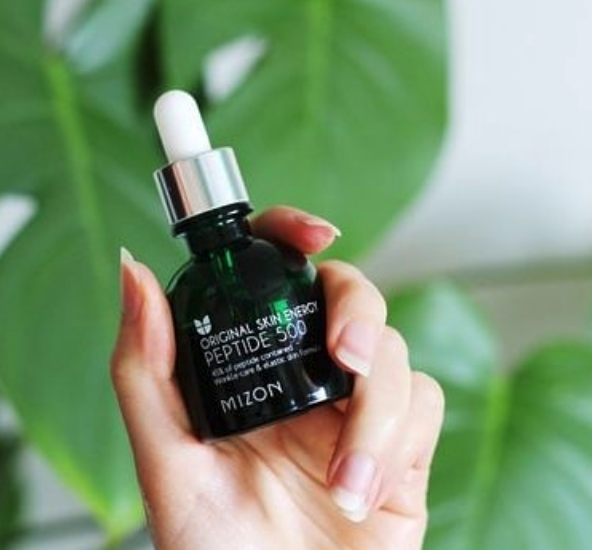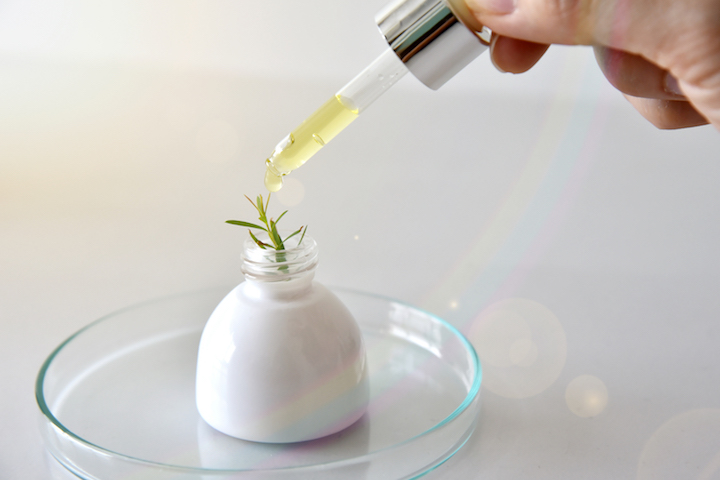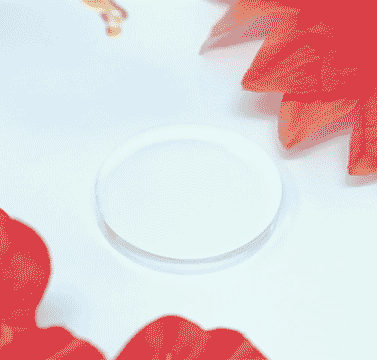3 Buzzwordy Skincare “Technology” Trends That Leave Me Cold — & 1 That Gets Me Hot
In skincare, it’s easy to get swept away by the newest bad boy that comes along, promising you the world (and glass skin). But are they just all style and no substance? Here, three skincare technology trends that may not be all that they seem — and one that just may turn out to be the nice, quiet one that will really make your skin swoon.
The other evening, I was doing my usual post-shower skincare on the sofa with the local news on for background noise. Vacantly staring into the middle distance while I smoothed away the air pockets under my sheet mask, I snapped to attention when a skincare commercial started. It was a body wash ad that touted the product’s ability to protect skin’s “microbiome,” and it made me roll my eyes so hard I messed up my damn mask again.
That got me thinking about all the skincare “technologies” and “innovations” that marketers blast at beauty consumers on a daily basis. You’d think I of all people would be all about this, but I’m finding myself cynical in my old age. It’s not even that I hate or reject any of the buzzy concepts on this list. (Well, maybe just one.) It’s more that for a seasoned skincare junkie, I find the hype around the following three "innovations" and skincare technology trends way overblown. Let me tell you why.

1. Peptides
Peptides are chains of amino acids that have become increasingly common in anti-aging skincare products, where they are often touted as able to rebuild collagen or even mimic the effects of cosmetic procedures like Botox injections.
There are a number of different peptides in use in cosmetics, with varying claims and degrees of research (and effectiveness). The most popular ones, like palmitoyl pentapeptide‐3 and palmitoyl oligopeptide, theoretically signal the skin to produce more collagen or elastin — good news for aging skin that’s losing firmness. These are the kinds of effects we generally expect from actives like vitamin C or retinoids.

Look, I wouldn’t kick a peptide out of bed if the peptide in question came in an otherwise compelling product that I already enjoyed anyway. But I don’t get excited by the idea of peptides, I don’t seek out peptides in products, and I get really annoyed when I see peptides marketed as an alternative to strong actives.
Like any other skincare ingredient, peptides are limited in effectiveness by factors like their concentration and the overall formula, which can determine whether they’re even released in a way that skin can use. Far less research into peptide formulation and stability exists than for vitamin C and retinoids, so finding a peptide product that delivers results (let alone results on par with vitamin C, retinol, or tretinoin) is a crapshoot.
Some peptide products may indeed deliver visible improvements, but good luck figuring out which ones will based on the label.
2. Phyto/botanical/plant-based “actives”
Speaking of ingredients implied to have effects comparable to those of conventional actives, the “phyto” trend really grinds my gears.
My childhood encounters with poison ivy and poison oak and my adult understanding of botanical monstrosities like the Australian suicide plant have taught me that plants are not always friendly and nice to skin. The “plant-based” beauty trend is manipulative and misleading. The worst offshoot of it, in my opinion, is the botanical actives trend.

By “botanical actives,” I mean those products whose marketing implies that their botanically derived ingredients will deliver effectiveness on par with standardized actives like AHAs, BHAs, vitamin C, and, again, retinoids. Retinol is a great example, actually. Retinoids are vitamin A derivatives, so brands pushing the natural angle often tout extracts and oils from vitamin A-rich plants as alternatives. Some even straight up call their products “phyto-retinol.” You’ll see the same approach for the other actives I listed as well.
So here’s the thing. If you look at all the actives products I like, you’ll see that they clearly disclose the exact concentration of the active ingredients in them. COSRX’s AHA product has 7% glycolic acid and their BHA product contains 4% betaine salicylate. I like vitamin C serums with 20% l-ascorbic acid, and my Curology prescription contains 0.07% tretinoin. Those numbers matter. Those numbers are based on research into the effective concentrations of those actives.
View this post on Instagram
With plant extracts and oils, they may indeed contain some naturally occurring versions of conventional actives or compounds that skin may be able to convert into those actives. But how much? X plant oil is not just vitamin A. It contains vitamin A, but it isn’t just vitamin A. How much vitamin A is in there? And how much will end up on your skin? And how much will your skin actually convert into retinol? You have no idea, and realistically, it’s probably not very much — nowhere near as much as your skin gets from products with clearly labeled concentrations of standardized active ingredients.
I like botanical ingredients as supplements to my actives, as I’ve said before. I think they can be great for adding extra antioxidants into my skincare, and some have other nice effects as well. But marketing plant-based products as outright alternatives to actives is, in my opinion, shady. The standardization isn’t there. You have no idea how much of the actual “active” compound you’ll get out of the product. It’s just not the same.
I do wonder what trendy skincare ingredients could be derived from the Australian suicide plant, though.
3. Probiotic/prebiotic skincare
Back to the skincare commercial that set off this whole rant.
This one is a little different, because I don’t have a problem with probiotic and prebiotic skincare concepts themselves. The microbiome is real (and you can read a great primer right on this site, written by my good friend and fellow blogger Sheryll Donerson), and the microbiome does have an impact on your skin’s health and appearance. Even the Paula’s Choice writers approve of probiotic and prebiotic skincare ingredients, and sometimes I feel like they hate everything.

No, the probiotic/prebiotic trend irritates me because at least for K-beauty fans, it’s not new at all. Lactobacillus and bifidabacillus, ferments made with those bacteria, and prebiotic ingredients like xylitol have existed in a huge variety of Korean (and Japanese and Taiwanese) products for ages. With this trend, I’m just irritated when I see it presented by late-to-the-game brands as something new and unique.
Also, from what I can tell, the body wash advertised in the commercial that set me off really just cleanses without stripping skin. They shoehorned the term in because it’s trendy. The body wash “respects” your skin’s microbiome by being gentle and sulfate-free.
Liposomes
And now for something completely different: a skincare technology I think deserves more attention.
Skincare products face a serious challenge. Skin exists to keep things out, not to take things in. Many ingredients, like collagen, are either too big to penetrate skin’s horny layer (huehuehue), or don’t penetrate the horny layer well, either due to molecule size or, in the case of ingredients like astaxanthin, due to poor water solubility.

Liposome encapsulation addresses this challenge. In very simple terms, an ingredient is chopped up into nano-size particles and encapsulated in a phospholipid sac that facilitates more effective delivery into skin. Liposomes can be targeted to specific types of cells and can even increase the stability of ingredients prone to oxidation.
I like liposomes. One of my favorite sheet masks of all time, the My Beauty Diary Liposome Hyaluronic Acid Mask, makes use of them. Liposomes are a skincare technology we could stand to see more of, in contrast to all the peptides and plant-based pseudoactives flying around these days.
Cosmetics marketing is a minefield of often nearly meaningless buzzwords and recycled hype. It can be hard to distinguish between what’s worth noticing and what’s nothing but a flash in the pan, especially when real, credible research takes years and years to produce.
What skincare technology trends have you rolling your eyes, and which ones do you think have real potential? Let us know in the comments!
Loading...